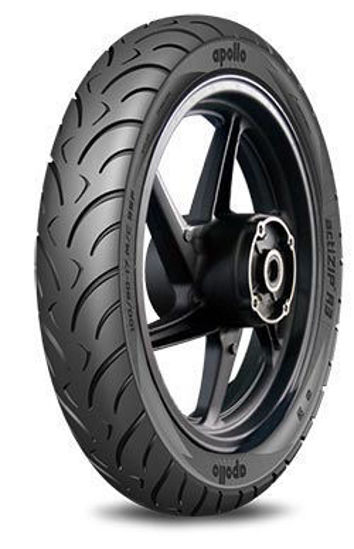Exploring the Latest Innovations in Racing Bike Tyres
Racing is a thrilling and high-performance sport where every detail counts. From engine power to aerodynamics, the smallest tweaks can make a significant difference in a rider’s success. One of the most important factors in any racing bike’s performance is the tyres. Racing bike tyres are designed for extreme conditions and need to provide unparalleled grip, speed, and durability.
In this guest post, we explore the latest innovations in racing bike tyres, from advancements in materials and tread patterns to the future of tyre technology. With technology evolving at a rapid pace, these innovations are shaping the future of racing bike tyres, enabling cyclists and racers to achieve faster lap times and better control.
The Evolution of Racing Bike Tyres
The evolution of racing bike tyres has come a long way from the early days of cycling. Initially, racing tyres were simple rubber covers, often with minimal grip. As racing speeds increased and bikes became more specialized, tyre design had to adapt. Today, racing tyres are engineered with the latest materials and technology, offering a combination of performance, durability, and speed.
Key Advancements in Racing Bike Tyres
Over the years, several advancements have transformed racing bike tyres into high-tech components that play a vital role in performance. Here are some of the most notable innovations that have revolutionized racing tyres:
Enhanced Rubber Compounds
The rubber compound used in racing bike tyres has a huge impact on grip and overall performance. Traditionally, tyres were made from a single type of rubber. However, advancements in chemistry have led to the development of multi-compound tyres. These tyres feature different rubber compounds on different parts of the tyre to optimize performance.
For example, the centre of the tyre may use a harder compound to provide durability and reduce wear, while the edges are made from a softer compound to maximize grip during sharp cornering. This combination of compounds allows riders to enjoy both speed and control without sacrificing either.
The Benefits:
- Better traction and grip: Softer compounds offer superior road contact.
- Increased durability: Harder compounds extend the lifespan of the tyre, especially in the middle.
- Optimized performance: Riders get the best of both worlds—stability and cornering power.
Tubeless Technology
Tubeless tyres, which eliminate the need for an inner tube, have become a standard feature in modern racing tyres. The absence of a tube means there’s less risk of a puncture during high-speed races, and the overall weight of the tyre is reduced. Tubeless technology also allows for lower air pressure, enhancing grip and comfort without compromising safety.
In addition, tubeless tyres are designed with a sealant that automatically fills small punctures, which means racers can continue their race without worrying about flat tyres. This advancement is especially crucial for long-distance racing events or high-stakes competitions where every second counts.
The Benefits:
- Reduced risk of punctures: Sealant technology provides self-repairing capabilities.
- Lighter weight: Eliminates the inner tube for a more lightweight design.
- Lower air pressure for increased comfort and grip: This improves traction on various surfaces.
Lightweight and Stronger Materials
Material science has advanced significantly in recent years, and racing bike tyres are now made from stronger, lighter materials. Carbon fiber, Kevlar, and other advanced composites are being incorporated into tyre construction to increase strength while reducing weight.
Lightweight tyres allow racers to accelerate faster, climb more efficiently, and the handle turns more smoothly. Despite being lighter, the use of stronger materials ensures that the tyres remain durable and resistant to wear. The lighter construction also contributes to improved fuel efficiency, reducing the overall drag during high-speed cycling.
The Benefits:
- Faster acceleration: Reduced weight enhances speed and maneuverability.
- Improved performance: Lighter tyres contribute to better aerodynamics.
- Greater durability: Advanced materials make tyres stronger and longer-lasting.
Aerodynamic Design
Aerodynamics is a critical aspect of racing bike tyres. A tyre’s shape and profile can influence the overall drag on the bike, affecting both speed and fuel efficiency. Racing tyres are now designed with careful attention to their aerodynamics, using features like optimized tread patterns and sleek profiles to reduce air resistance.
Some modern racing tyres also feature a tread design that enhances airflow, reducing drag while improving overall bike stability. For example, slick tyres with no tread are commonly used in dry conditions because they provide the smoothest surface for minimal resistance. On the other hand, tyres with strategically placed grooves are preferred in wet conditions to channel water away from the tyre, preventing hydroplaning.
The Benefits:
- Reduced drag: Minimizes air resistance, helping achieve higher speeds.
- Improved stability: Enhanced tyre shapes and profiles help maintain balance and control.
- Better grip in different weather conditions: Tyres with optimal tread designs offer a mix of grip and aerodynamics.
Smart Tyre Technology
The introduction of smart tyres is one of the most futuristic innovations in the cycling industry. These tyres are embedded with sensors that monitor critical data, such as tyre pressure, temperature, and wear. By collecting real-time data, smart tyres allow racers to optimize tyre performance and prevent issues like underinflation or overheating.
Some high-end racing tyres are equipped with Bluetooth technology, which allows them to communicate with the rider’s bike computer or smartphone. This technology provides valuable insights into tyre performance, enabling the rider to make informed decisions and adjust tyre pressure as needed during a race.
The Benefits:
- Real-time data tracking: Monitor tyre performance and health during the race.
- Improved safety: Early detection of tyre issues reduces the risk of blowouts or poor handling.
- Better performance management: Optimize tyre pressure and temperature based on real-time data.
Advanced Tread Patterns
Tyre tread patterns are more than just aesthetic designs—they play a crucial role in how a tyre grips the road. In racing, every millisecond matters, and the tread pattern can greatly impact performance, especially in varying weather conditions.
For example, tyres with a slick surface provide maximum grip on dry surfaces, while tyres with specialized grooves are designed for wet or muddy conditions, offering improved water displacement. Many racing tyres now feature hybrid tread patterns that balance both dry and wet performance. Additionally, some manufacturers are experimenting with tread designs that reduce rolling resistance while still maintaining high traction.
The Benefits:
- Optimized grip: Tyre patterns are designed to maximize traction.
- Improved performance in diverse weather conditions: Hybrid treads perform well in both wet and dry conditions.
- Lower rolling resistance: Improved tread designs reduce friction, making tyres more efficient.
The Future of Racing Bike Tyre Innovations
As the demand for speed and precision increases, racing bike tyre technology will continue to evolve. Future innovations may focus on:
- Self-healing tyres: Taking tubeless technology a step further by automatically repairing larger punctures.
- AI-driven tyre design: Using artificial intelligence to predict tyre performance and design the perfect tyre for each rider and racing condition.
- Sustainable materials: As eco-consciousness grows, manufacturers may incorporate sustainable materials into racing bike tyres, balancing performance and environmental impact.
Conclusion
Racing bike tyres have come a long way from their humble beginnings, and the latest innovations are helping riders reach new heights of performance. From advanced rubber compounds and tubeless technology to smarter materials and aerodynamic designs, cutting-edge advancements in racing tyres are enhancing speed, safety, and control. These innovations are paving the way for even more breakthroughs in the future, ensuring that racing bike tyres continue to be at the forefront of cycling technology.
For riders seeking high-quality and performance-focused tyres, Apollo Tyres offers a wide range of options that incorporate the latest technologies and materials. Apollo Tyres is known for its commitment to innovation and quality, making it a trusted choice for both professional racers and cycling enthusiasts. Whether you’re gearing up for a competitive race or looking for long-lasting tyres for your daily ride, Apollo Tyres provides solutions that cater to all your needs.
Invest in Apollo Tyres today and experience the perfect blend of performance, durability, and innovation that will keep you ahead of the competition.














Post Comment